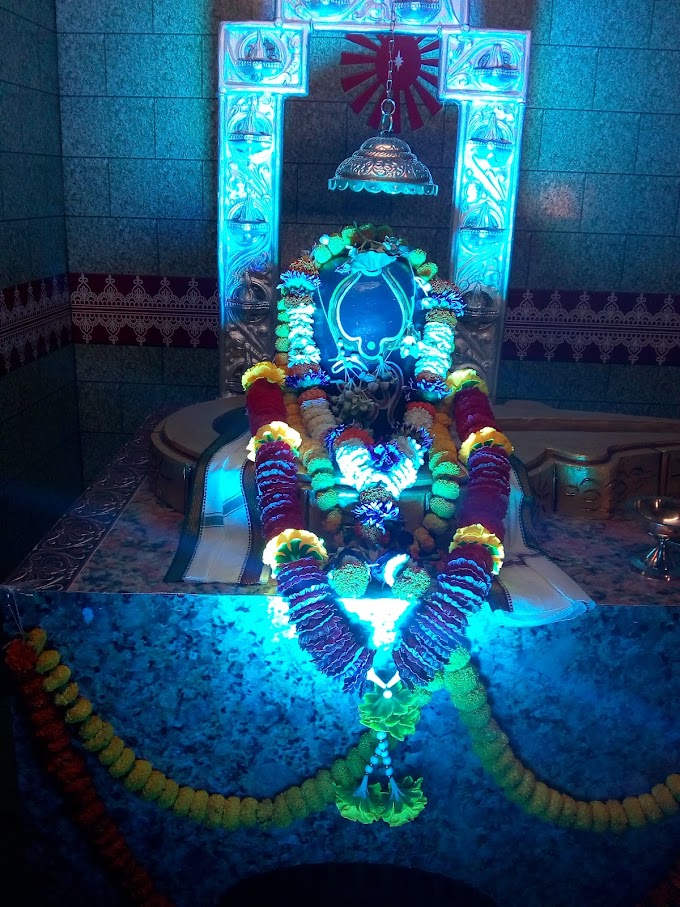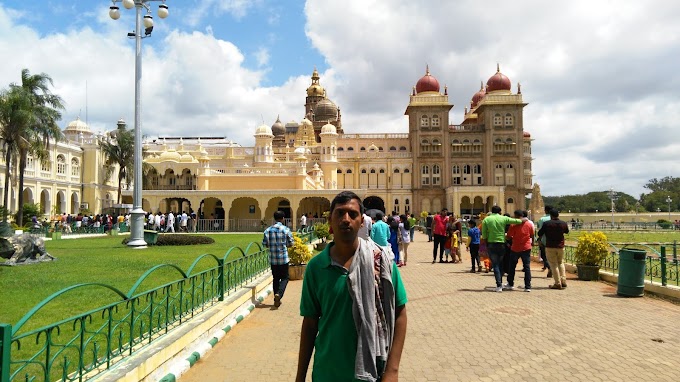STAGE OF HUMAN (MANUSYA)
LIFE
The ancient India is very well known for her spiritual culture, discipline life, procedure of think and lifestyle. The present world accepted that the ancient India procedure of living style is the right path for manushya (human). Even some country has already adopted the ancient Indian procedure. The present generation is mis-guided and thinking that the said procedure is not for the modern era. At the time of ancient era manusya (human) lived with nature and respect the nature by way of Homa, Jagya etc. In ancient India, there are four ashramas (stage of human being) first is Brahmacharya (student), Grihastha (to enjoy family life), Vanaprastha (to leave family life) and Sannyasa ( to teach other and who get the Moksa).
All these are relevant to the culture which shows the culture was pure during the ancient era. the culture of the society during that time gives many lesson to the present society. The culture of the present generation (mainly Schoolong / education life) is very different.
Every stage has fixed period or age. A baby come to an earth to do
certain pre-fixed word. When a baby come to an earth, that time he / she has no
seance to recognize/ no seance of rational / no sence of feeling/ no sence of
understand. Therefore from the moment of birth to till age of 5 year, there is
no restrictions.
The children of age between 0 to 5 year are not so mature and mentally or physical are not ready for Brahmacharya. Therefore, the age between 0 to 5 years ate not taken into consideration.
BRAHMACHARYA :-
This stage of life is the first stage and very
important for every body. The concept of Brahmacharya is been an ancient
procedure to make a person discipline. The word Brahmacharya is a
sanskriti word and actual meaning is Brahman” means “the divine” or “ultimate,” “charya” means “the path.
The person only get the discipline at the stage of Brahmacharya. the
practice of training people to obey rules or a code of behaviou is the main
object of this stage. One good behaviour person can change the society.
There is particularly age for Brahmacharya special 5 years to 24 years.
In between this age, the person get the knowledge of everything. In this stage
students are not only to learned the behavior but also learn about veda, social
life, defense, gymnastics, medicine, politic and many more.
A person at age 5 years to 24 years does not mean that he is a
Brahmacharya but for Brahmacharya one should go to Aashram where, there is a
teacher who teach their student as per the interest or willingness to
learn or eligible to earn respective field.
At the time of ancient era, the student sifted their house to Aashram. The guru
accept the teacher if the said person passed the examination or the guru
rejected the student. We can call it as application form.
The guru decide the future of the pupils and on which subject, the pupil
is capable to gain the knowledge. Aashram is only one place where all pupils
gain their knowledge from primary school to university.
Gurukul always situated middle of the forest. The pupils first job is to
clean their part if the aashram. Aashram is also for Brahmacharini. Early
morning, Guru chart the sloka and yagya. Aashram has always fixed time to do
own job and thereafter guru teach the lessons to their pupils.
The word "GURU" Derived from sanskriti work which means the
person who dispels the darkness and takes towards light. At the time of
ancient india, there was a particular person to whom called
"GURU". After carefully gone through severy books, internet
search I come to the conclusion that there was a eligibility To be Guru. The
said eligibility are:-
1- to be a Brahmin
2- he should be Rishi.
Brahmin is the highest class of the four major class of traditional
Indian society, responsible for officiating at religious rites and studying and
teaching the Vedas.
Rishi is a vedic word which means accomplished and enlightened
person. At the to me of Post-Vedic tradition of Hinduism rishis means
"great sadhus" or "sages" who after intense meditation
(tapas) to realized the supreme truth and eternal knowledge.
The present era is smoothly going on due to bless of some of the sages
like Vyasa who is the author of Mahabharat, Sushruta who is the
father of surgery ( health science) and author of Sushruta Samhita,
Asharya Charaka who is the father of Medicine and author of Charak Samhita”,
Aryabhata who was the master of Astronomer and Mathematic, Chanakya
who was the great economist and the author of Arthashastra. All above sages
completed their Brahmacharya life successfully. After the successful completion
of their education they expressed their thinking, practical life and
difficulties in their respective books and now we are following their
procedure.
GRIHASTHA ASHRAM
Grihastha ashram is the second stage of life and followed by the
Brahmacharya. The word “GRIHASTHA” is derived from the Sanskrit word
“GRHASTHA” which means householder. The age for the Grihastha ashram is
between the age of 24 years to 48 years. this is the most important time
to expand the family member and increase the genealogy by way of
giving birth of children, fulfill the desire of himself / herself along with
family, friend, and duty towards society. The main object of this stage
are followings:-
1.
Giving birth of children and expand the
family (Dharma)
2.
Earn the wealth (Artha)
3.
Duty toward society (karma)
Expand the family and Dharma
At the stage of Brahmacharya one earn the knowledge, discipline and
what is his / her karma. one person’s responsibility comes after the age
of 24 years and he / she is ready for this stage physically as well as
mentally. In this stage marriage life of manusya (human) maIt is the correct
time for sambhoga. After the sambhoga increase the genealogy by way of giving
birth of children. It is the Dharma to guide the Kutimba (family) , to
look after the Kutumba and fulfill the desire of the Kutumba.The Brahmacharya
make the indriya to be ready for the next stage of life. The Dharma of a
Manusya (human) to give emphasis to his / her family. And the family always
support and care the members of the (kutumba) with a discipline manner.
Manusya (human) is a social animal and without family as well as society,
it is impossible to live. It is not a easy method to handle this stage.
Wealth (Artha)
In the aupanisada it is described that the grihastha Aashram acquiring the
wealth (Artha) by honest means. The wealth (Artha) is divided into three. One
third is for the family and self expenditure, one third of wealth (Artha) is
for saving for future and in case of illness, investment in business,
requirement of huge amount and finally one third of artha expenses for the
Dharma like help the nirdrabya (poor man), Rishi, expenses towards animals. It
is very difficult to live without artha but artha is the main cause of the
disturbance of life.
Duty toward society (Karma)
Manusya (human) cannot live without
society (samaja) and for that manusya (human) have some karma (duty) towards
society (samaja) also. Manusya (human) create the society (samaja). Therefore,
how the society (samaja) alive that is the responsibility of Manusya (human)
and it is not easy to maintain the same things. Brahmacharya make the Manusya
(human) to be discipline for which the discipline creates a healthy
society. Artha which a human (Manusya) earn on his/her legal (dharma) way
that artha share with the society for the benefit of others and development of
society. The Ancient Indian society was based upon Varna (castes) and ashrams.
There are four type of Varna (castes) i.e Brahman, Kshatriya, Vaisya, and Sudra
respectively. The contribution of four Varna (castes) is the major role for
the society (samaja).
VANAPRASTHA
It is also a concept in Hindu traditions,
representing the third ashrama (stages)
of human life. After completion of Grihastha ashram
manushya (human) enter into next stage. This ashrama (stages) is from the age of 48 years to
72 years. the word “VANAPRASTHA” is a Sanskrit word which means “to gives up
sophisticated life". Grihastha ashram is a sophisticated life but this
stage indicates that to leave the sophisticated life ( forget the moho maya).
It is encouraged gradual shift of social responsibility and family duty to
other member who are at the stage of Grihastha ashram, to give practical
knowledge about earning and expenditure of artha (economic role), and focus
towards spirituality life for moksa. That life span of manusya (human) was the
age of 60 years to 65 years. anyone can call it as last stage. For Moksa one should
chart the name of God, attend the spiritual meeting, and travel to spiritual
place (Minder). Whoever pass this stage of life, he / she is eligible for the
next stage which called Sanysa
Sannyasa
Sannyasa
is the last stage of manusya (human). It is starting at the age of 72 years to
till death. Sannyasa is a Sanskrit term which refers to a
particular stage of life and or spiritual development, for which one renounces
material possessions to focus purely on spiritual matters. At this stage the
goal of manusya is to achieve moksha, and liberation from the
cycle of birth and death. In Hinduism manusya ultimate goal is to get moksha
and this stage which gives a chance to get moksha. A sannyasin is one who has totally
dedicated himself to the purpose of self-awareness and mokshya main object of
sannyasa is “who you are”. the sannyasa should become an inspiration to other
members and they can transmit the light (knowledge) as guru.
The human ( Manushya) earn everything stage by stage and every stage has some specialty. The stage (ashram) gives the knowledge to every human how to life, what to do and what is the propose of birth. If a human wants to break the cycle of life, he / she should attend the final stage and gain the knowledge for mokshya. There are some person who get mokshya at the early stage of life like Lord Budha, Mahavir etc. The Stage of life has the vital role in society and it shows culture of the ancient era.












